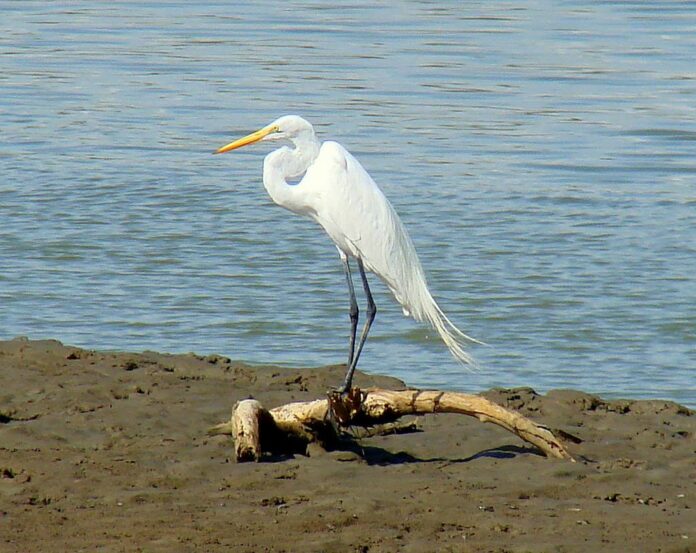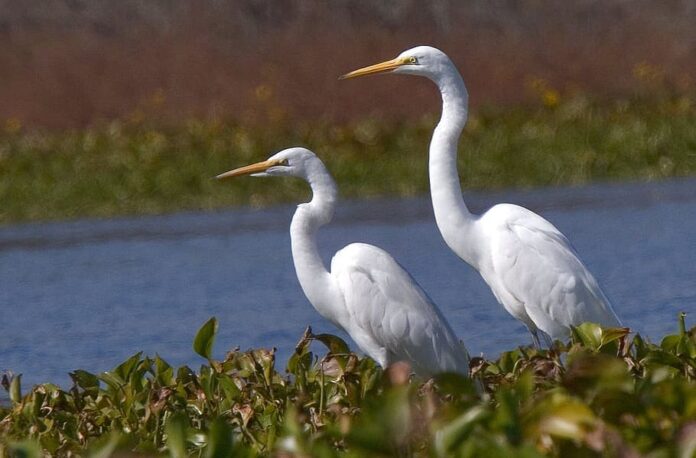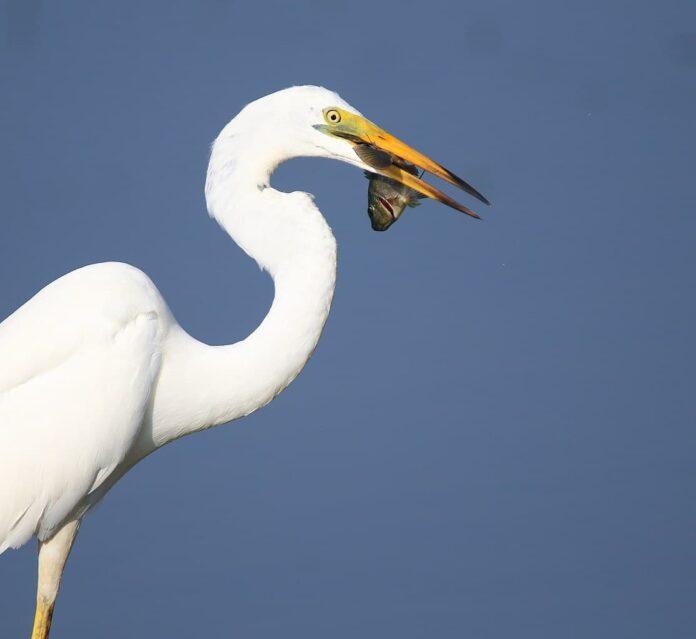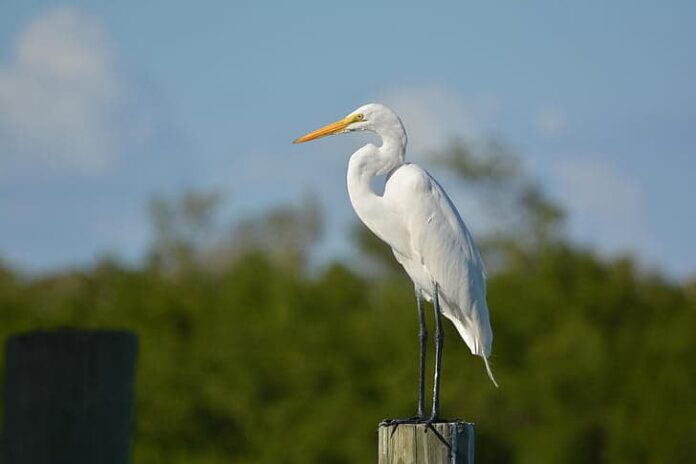The main factor that captured my interest in writing about the eastern great egret is its unusually long neck. I mean, would you look at that? Egrets are beautiful birds that not a lot of people pay attention to. So let’s talk about one of them today and see if you find anything interesting about the eastern great egrets.
1Appearance

As a large bird, an eastern great egret stands around 83 to 103 centimeters tall. This beautiful bird has an all-white plumage, black bill, and long black or red legs. The face of an eastern great egret is bare but will change to green during the breeding season. When the breeding season comes, they also have long neck plumes as well. And the most distinguishable feature of this egret is the long neck that is one and a half times as long as its body. The appearance of the eastern great egrets during the breeding season is absolutely phenomenal.
2Behavior

This egret species live and breed in communal roosting sites near the shore where they spend most of their day feeding. During the breeding season, they can be very aggressive in defending their territories. It is not uncommon for them to leap or jab the intruder while squawking loudly to chase it away.
Eastern great egrets nest in isolated pairs and sometimes in colonies, usually with other wading birds. The male selects the nest area and builds a nest before starting his courting which includes calling and circular flight display. The nest can be up to 15 meters off the ground, made from sticks. One of the most courtship displays that every male does is the neck stretching. A male will stretch his neck up with his bill pointing skyward, trying to impress the female.
When the breeding begins, a female lays 3 to 4 or up to 6 pale blue-green eggs. Both parents incubate the eggs, and the process takes around 23 to 26 days. When the eggs hatch, both parents will also feed the chicks by regurgitation. After around 3 weeks, the young may clamber out of the nest before flying 3-4 weeks later.
3Feeding & Habitats

Not different from other egrets and herons out there, this egret species feeds on both invertebrates and vertebrates. The most common meals include aquatic insects, crustaceans, fish, frogs, insects, mollusks, rodents, small birds, and small reptiles. When hunting, they stand still or wade in shallow water before spearing the prey with their bill. They are fast, and their rapid bill thrust always catches them the meals.
The distribution of the eastern great egret is very wide across Asia and Oceania where natural habitats and food are abundant. Normally, they like living in marshes, mud flats, ponds, and shores but they forage in open areas. Eastern great egrets look for food in lakes, large marshes, shallow coastal lagoons and estuaries, and rivers in wooded country.
Related Post: Beautiful Birds With Crowns




